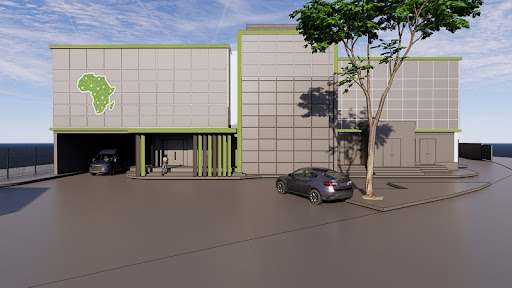advertisement
DRC Has Its First Open Access Data Centre In The Pipeline

The Democratic Republic of the Congo (DRC) is set to have the country’s first open access, carrier-neutral data centre, OADC Kinshasa; FIH1 which will go live in Q2 2023.
The data centre is expected to boost the country’s digital ecosystem and economy by delivering converged open digital infrastructure services for colocation and connectivity.
Located in Kinshasa within TEXAF’s Silkin Village – one of the largest digital hubs in Central Africa – the 2MW-capable OADC Kinshasa is a partnership between transformational pan-African data centre operator, Open Access Data Centres (OADC), part of the WIOCC Group and TEXAF, a major long-term investor in the economy of the DRC.
advertisement
OADC Kinshasa is a strategic element of digital infrastructure for the DRC, which the World Bank reports as being one of the most under-developed digital economies in Africa. It will boost the country’s IT, colocation, and support the cloud infrastructure needs of a wide range of businesses and enterprises, enabling them to improve efficiency, expedite digitisation initiatives and more effectively service business and customer needs. The open, carrier neutral facility will create the first vibrant and comprehensive interconnect and peering ecosystem in the country across multiple carriers, ISPs, content providers and Internet Exchanges; a first in the DRC, transforming the digital infrastructure ecosystem.
As the country’s first open access, carrier neutral data centre, OADC FIH1 Kinshasa is also expected to boost the country’s internet penetration which InternetWorldStats reports was only 17.4 per cent at the start of 2022, compared to 43% for Africa as a whole and 68.6 per cent for the Rest of the World.
Similarly, improved access to connectivity, cloud and internet services can be expected to increase consumer use of online applications such as Facebook: according to InternetWorldStats, in April 2022 DRC’s Facebook subscribers, as a percentage of the country’s population, was only 5.4 per cent, compared to 18.6 per cent for Africa as a whole and 38.1 per cent for the Rest of the World. The quality of the facility, which will be Tier III Certified by the Uptime Institute, together with its vibrant interconnect ecosystem is expected to draw key cloud and content services into DRC.
advertisement
Commenting on the data centre, Dr Ayotunde Coker, CEO of OADC, said that it is part of what the company has in the pipeline for DRC to change the narrative and opportunities for large and small enterprises, government departments, ad international content networks, and cloud operators to localise in the country.
“As a result, we are already in advanced discussions with a number of potential anchor tenants about establishing their presence in our facility. Partnering with TEXAF, with their local knowledge, experience and understanding of the local business environment in the DRC, ensures that our approach to developing and expanding our capabilities in the DRC is consistent with – and tailored to – local requirements and demands, and that we help businesses and the country as a whole to contribute to and benefit from the digital transformation of Africa. The facility will join a growing network of interconnected, open and carrier neutral data centres across the continent,“ he said.
Accelerating DRC’s digital transformation
advertisement
According to a report by Endeavor Nigeria, the size of Africa’s digital economy in 2022 was $115 billion and expected to grow more than six-fold to $712 billion by 2050. However, while Africa has 17 per cent of the world’s population, it generates only 4 per cent of global GDP and has just 1% of the world’s data centre capacity – the continent’s ‘digital infrastructure gap’, where the digital landscape is characterised by islands of high-speed connectivity focused on the largest, predominantly coastal, urban areas, with limited network deployment to smaller locations.
OADC Kinshasa is bridging this digital infrastructure gap to boost the DRC’s economic fortunes and the efficiency of its businesses, as well as bringing significant improvements to the lives of individuals, and a catalyst to broadband penetration. The International Telecommunications Union analysis in its modelling of economic impact for Africa indicates a 10% increase in broadband penetration would result in 2.5% increase in GDP per capita.
The OADC facility will be a key enabler of sovereign data rules in the country, localising internet data and bringing more efficient access to data.